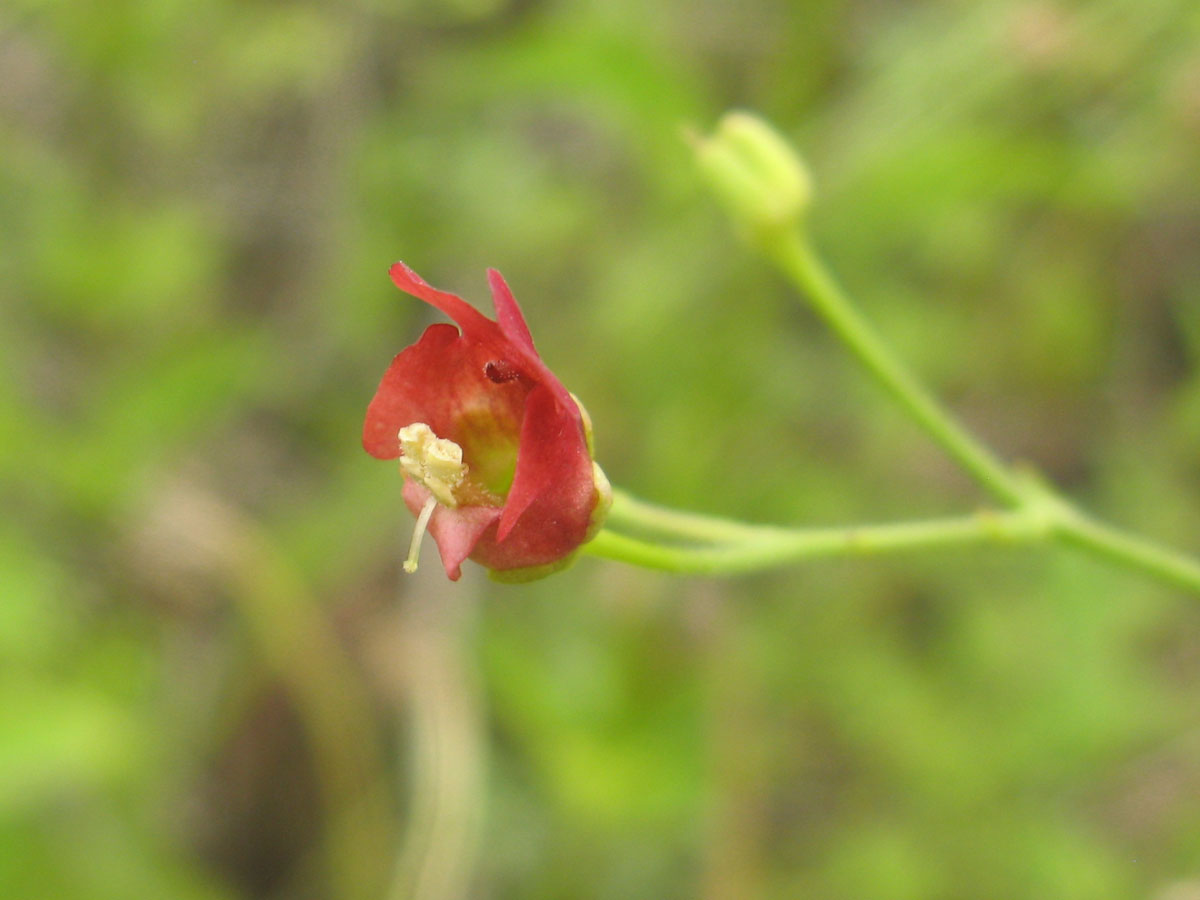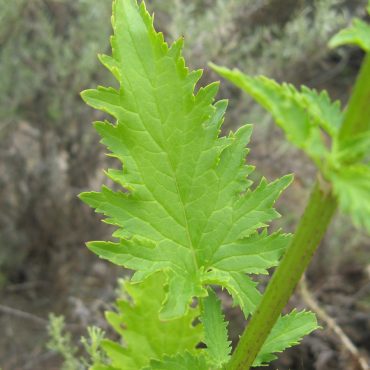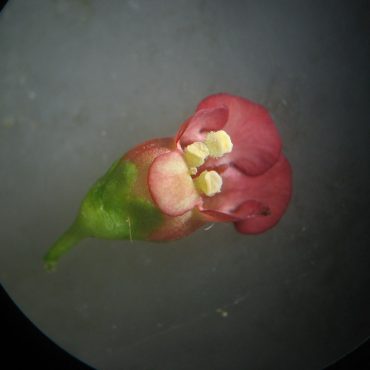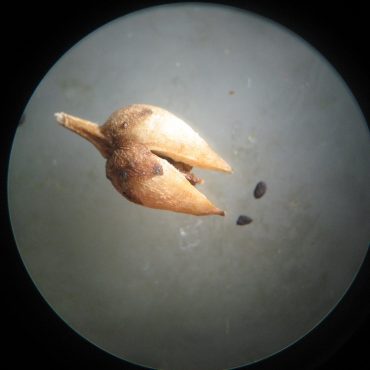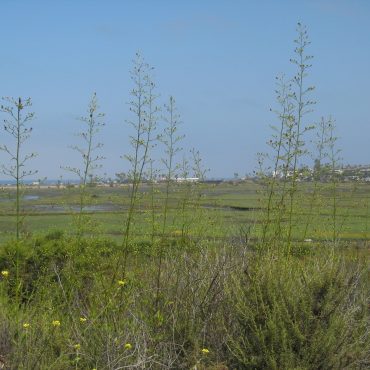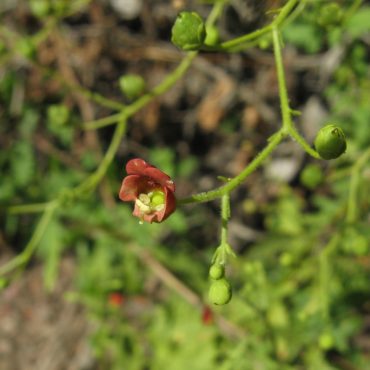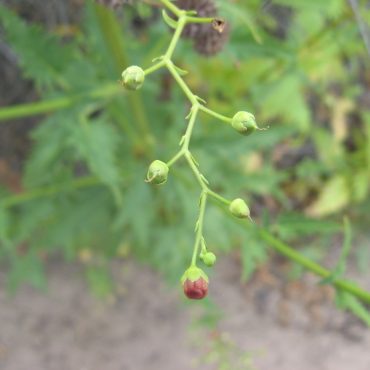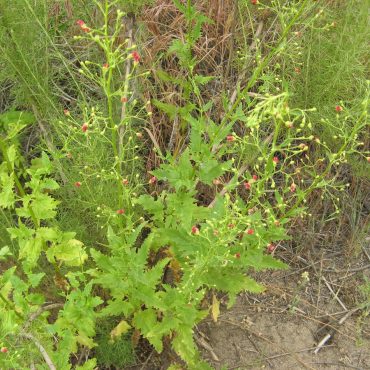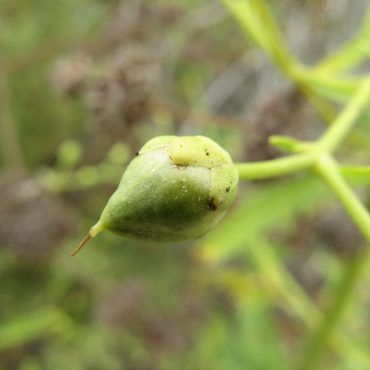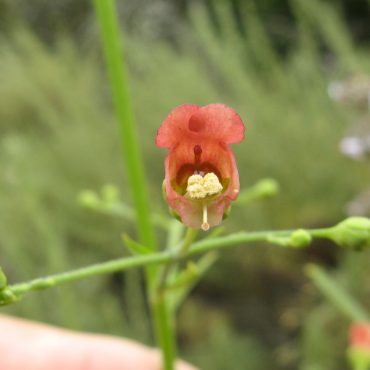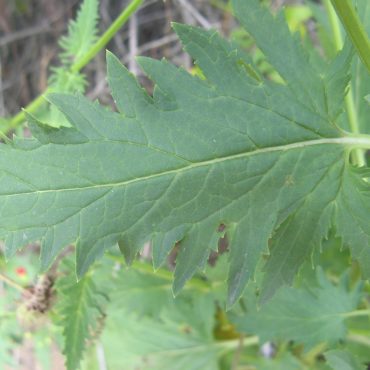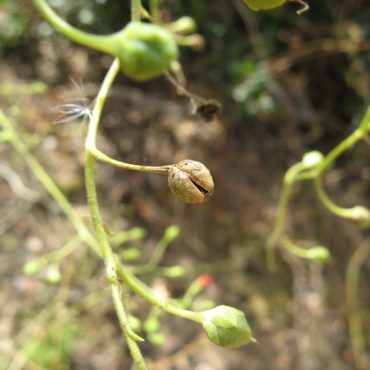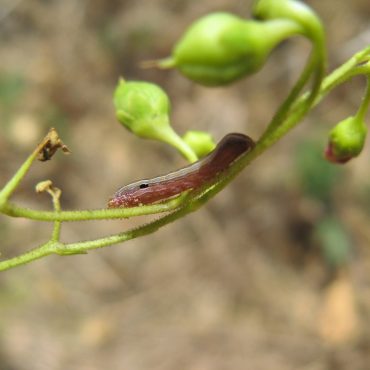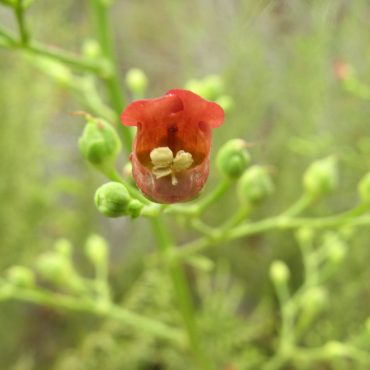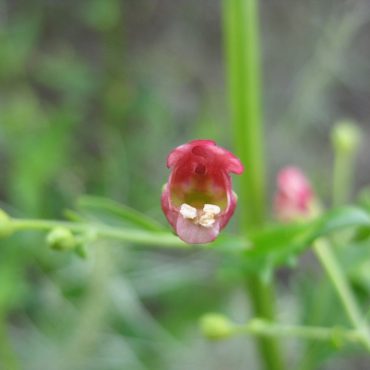California bee plant is a tall, branching, somewhat ungainly herbaceous perennial that may reach six feet23 or more4 in height. The stems are square. The bright green leaves are opposite, oval to triangular in shape, up to 7-1/2 inches (19 cm) long; the leaf base is heart-shaped or truncate and the margins are twice-toothed with coarse irregular teeth, sometimes appearing dissected or lobed. In the Reserve, leaves are hairless and smooth, although they are sometimes reported to have short, sticky glandular hairs below, especially along the veins.4,59 Leaf petioles are 3-1/2 inches (7 cm) or less and often fused at the base with the petiole of the opposite leaf.
Tiny, dark red flowers occur in compound clusters at the tops of stems. The flower cluster consists of a series of V-shaped nodes, each with a small, green, bract at the base. One branch of the V leads to a single flower, the other branch continues to another fork which again produces one flower and continues the main peduncle. As a consequence of this repeated structure, the peduncles may have a distinct zigzag shape. Although a flower cluster is large, the very open structure and tiny flowers do not produce a striking display, unless one includes the many bees that are in attendance.
Each flower is only about 1/4 inch (0.6 cm) in length. There are five green sepals that remain around the ovary after the petals have dropped. The flower is bisexual and bilaterally symmetrical with two petals up and three down; the latter sometimes appear as two petals to the side and one down. The corolla color is usually a dark red, sometimes faded on the lower portion and often yellowish deep within the throat. There are four fertile stamens, more or less appressed to the lower portion of the throat and extending to the edge of the lower lobes. The fertile anthers are yellow. The fifth stamen is reduced and infertile, mostly fused to the upper throat; the unfused portion is dark red and diamond shape or triangular. There is one pistil with a superior, green two-chambered ovary and a single style with a capitate stigma. The style is appressed to the lower portion of the tube and extends beyond the corolla, bending downward. The pistil matures before the anthers. In this area, the main flowering time is February – July.1
The fruit is a dry, brownish ovoid capsule that splits open when mature, releasing numerous small, dark seeds.

